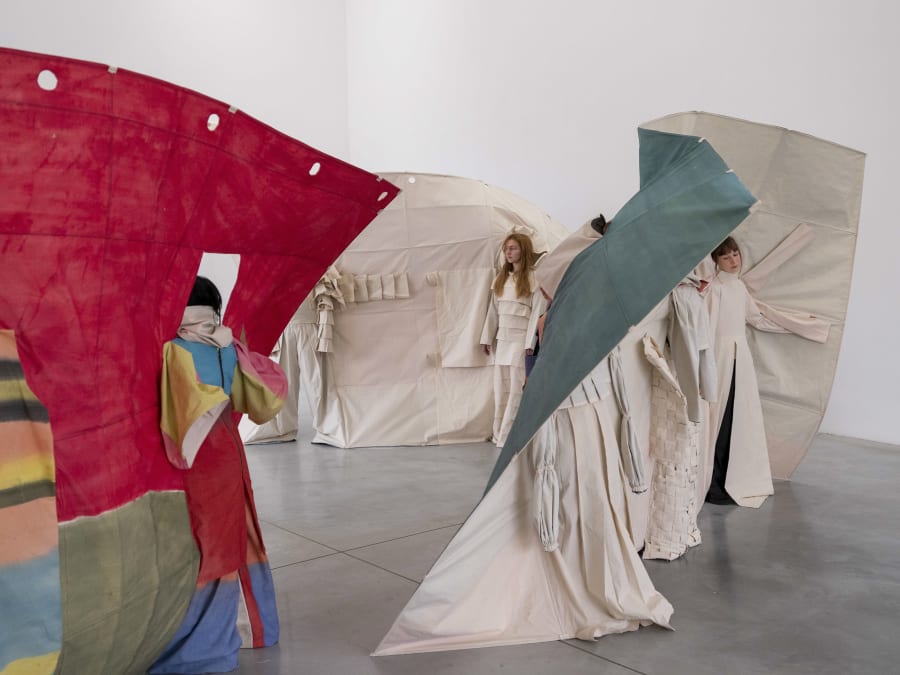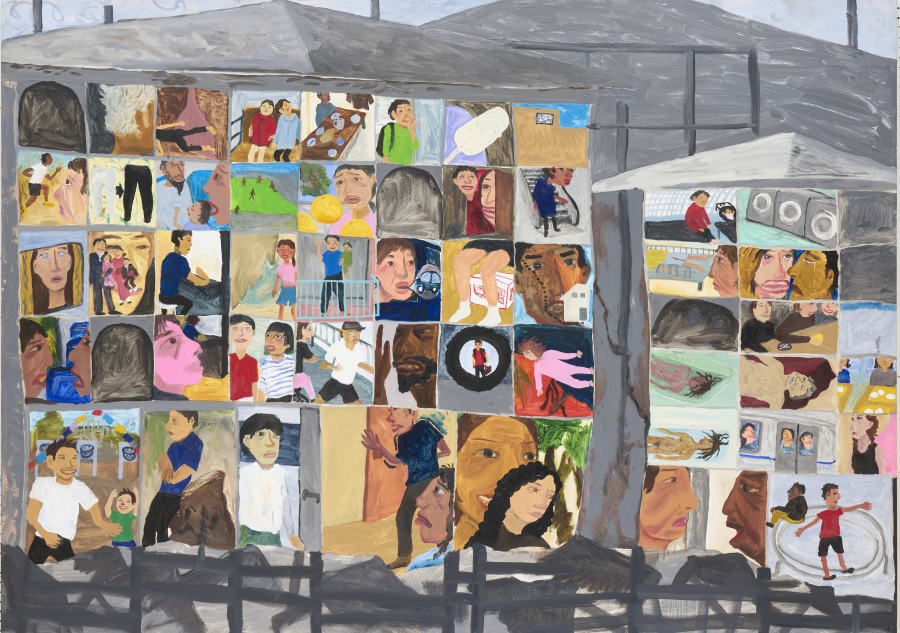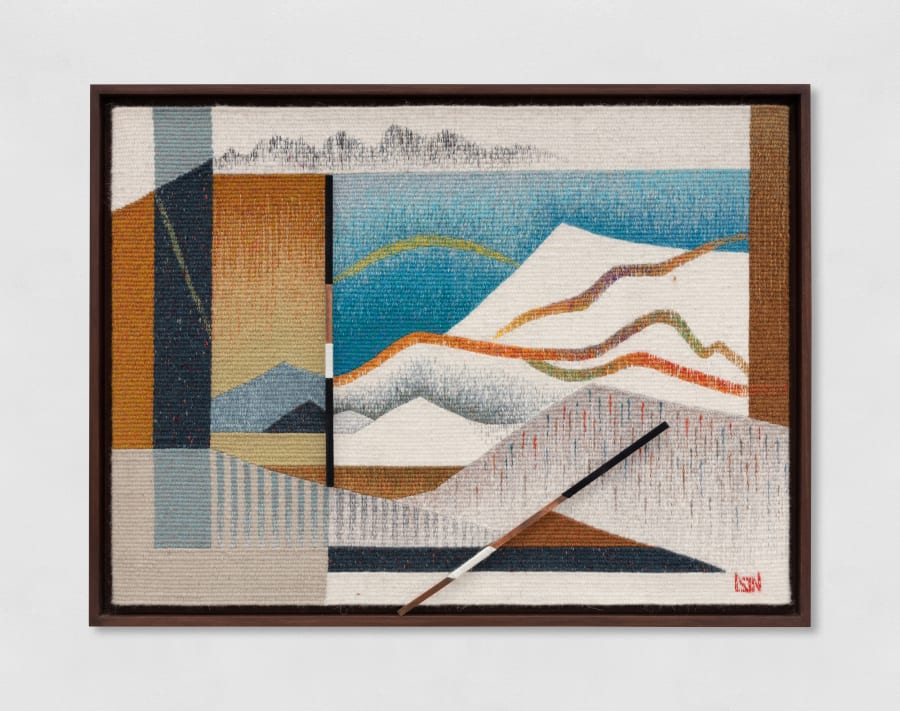This October, anyone searching Paris for a taste of cuisses de grenouille will find more than they bargained for at the Place Vendôme. A lot more. Hovering in the sky, part of the Art Basel Paris Public Program, will be a large, helium-filled inflatable of Kermit the Frog – that wisecracking symbol of American childhood, only here disconcertingly pathetic, his face deflated and drooping. On October 20, beneath the float, visitors will encounter a troupe of smiling performers in Kermit costumes, cheerily carrying on as if all were right in the world. One of those performers might be the artist behind this strange sight: the American-Venezuelan virtuoso of the uncanny, Alex Da Corte.
To hear the story behind Da Corte’s flying amphibian – officially titled Kermit the Frog, Even in sly reference to Duchamp’s The Bride Stripped Bare by Her Bachelors, Even (1915–1923) (aka The Large Glass) – we spoke with the artist about the origins of his sculpture, his early dreams of working for Disney, and his thoughts on AI.
Andrew Goldstein: When I learned you were bringing your Kermit the Frog sculpture to the Place Vendôme, I was excited, because I remember seeing a version of it back in 2018 in Cecilia Alemani’s Art Basel Cities show. As I recall, the inspiration was a surreal incident at the 1991 Thanksgiving Parade in New York. What’s the story behind this sculpture?
Alex Da Corte: Typically the Macy’s Thanksgiving Day Parade would premiere a new mascot every year, say Snoopy, Mickey Mouse, Betty Boop, Kermit the Frog. And in 1991, Kermit got caught on something, and part of his head tore. And what’s so curious is that, since only the head gets torn, only a part deflates. It’s between lives, between states.
The idea of your giant Kermit the Frog flying aloft over the Place Vendôme with its deflated head puts me in mind of a kind of American existentialism. I can only imagine how French and international visitors will read this symbol of American culture given the current political landscape. Was that context going through your mind?
It always was. This work was made in early 2018 in a first wave of this particular climate. My interest in Kermit has been this ‘It’s not easy being green’ thing. On one hand, green means green energy, being conscious of the environment; on the other, there’s also the sense of being an alien, being marginalized, and that hardship. Here we see Kermit wearing it plainly on his face – the facade drops when the camera isn’t focused on you, you let down the mask and let your feelings show.
What’s interesting – and necessary – in the work is the performers offering a reminder of the charade: their only task is to keep smiling and keep it moving. You don’t know who’ll be watching, but we can’t show on our faces the terror in our minds if we know the balloon is failing.
Let’s go back to how you got your start as an artist. You had two formative early artistic experiences, encountering Michelangelo’s Sistine Chapel ceiling and learning how to draw Snoopy. Could you talk about those?
When I was young we had a poster of the Sistine Chapel's Last Judgment at home. I’d always look at it – curious about the angels and devils, the drama, the way it held space for me. I was very interested in Michelangelo’s supposed self-portrait in the flayed skin of St. Bartholomew, and in the stories and backstories baked into the work, like his fraught relationship with the Pope. All of that was cool. That was one track: sensational painting with mythic or metaphorical imagery to tell stories about the basic human condition.
The other avenue came first, when I was living in Caracas, Venezuela. My mom, from the States, felt a real loneliness – she didn’t speak the language – and she looked for a way to communicate with my dad’s family there. She would draw for everybody. We were young enough to learn how to draw, so she taught everyone to draw Snoopy or Mickey Mouse – these American characters. That became a kind of love language for me to communicate with my cousins.
Your first dream was to become a Disney animator, is that true?
Yes. It was a total dream. Curiously – maybe back to Michelangelo – part of the methodology for animators when I was interested in animation in the late 80s was that you didn’t study how to draw a cartoon, you studied how to draw life. They were rotoscoping, but also drawing from life, so you had to look at [pioneering British photographer] Eadweard Muybridge (1830-1904), the anatomical figures of [Dutch anatomist] Albinus (1697-1770).
So when I started pursuing art actively, I just did that, drawing bottles, models, plants in a very methodical way. When I went to the School of Visual Arts in New York (SVA) to study animation, it was the old-school way – all on paper, paint on cels, shooting on film. But it was right at the intersection when they were beginning to introduce a digital way of making as well. When I saw that on the horizon I thought, ‘I don’t know that animation’s for me after all – and I don’t know that the digital is for me either.’ I turned a corner and moved to Philadelphia where I studied printmaking.
You mentioned how the digital turn in animation inspired you to leave SVA and shift your career. There’s hope in Hollywood that AI filmmaking tools will dramatically speed up production and lower costs, particularly in animation. Do you think about AI as a potential tool for your own work, or are you more in the 'Wake me up when it’s over’ camp?
I am a Luddite – not totally ‘Wake me when it’s over,’ but a Luddite [a person opposed to new technology or ways of working, editor's note]. What’s great about the video work I make for museum spaces is that I can work at the pace I need. Right now I’m working on a piece that’s in its fifth year, with the hope of finishing it in year six. It’s a stop-motion animation, and it’s taking the time it needs to take, because everything is frame by frame. It’s not to say that something that takes six years is greater than something that takes a week and is done by AI – I can’t speak to that. But for me, the joy is in the journey.
Do you see your way of working as deliberately oppositional to the digital?
No. I welcome the digital because, in some ways, it affords people so many new jobs. But I’m also reminded of the introduction of the Xerox machine when Disney made 101 Dalmatians, and how many people lost their jobs because the new machine expedited a kind of replication – tracing dots and line work to make all those spots. It was a great advance – 'We can produce this faster' – but if you look at Sleeping Beauty or Cinderella, within the characters’ faces there are multiple colors, tones of beige, gray, purple, blue, green in the line work. After 101 Dalmatians, the second they start reproducing with a Xerox machine, the line work becomes black, flat. It makes it look like a comic.
Your recent mid-career retrospective at The Modern Art Museum of Fort Worth in Texas was a tribute to the range and consistent brilliance of your work, from your painting and sculpture to installation and films. Where do you hope to go next? Is there a new format that opens up vistas beyond film?
I’ve been writing an opera for five years – that’s what I’ve been preoccupied with. Which is to say: There’s always room for another vista. I don’t know what’s on the horizon, but as ideas come to me – as I think about the next project – it’s a joyous place to be, a free space where I can dream and be open, like a sponge. I try, in this moment, not to plan too much. Just let it be.
Miu Miu is the Public Program Official Partner.
Kermit the Frog, Even by Alex Da Corte is presented by Sadie Coles HQ. Open from October 20 to 26. Free access. Discover the Public Program here.
Students from the École du Louvre are available every day from October 21 to 26, 2pm to 17:30pm, to provide visitors with information.
Andrew Goldstein is a strategic consultant working at the intersection of art, media, and technology; he is the former editor-in-chief of Artnet News.
Caption for header image: Performance view, Alex Da Corte, Kermit The Frog, Even, Fridericianum, Kassel, 07 September 2024. © Alex Da Corte. Courtesy of the artist and Fridericianum, Kassel. Photograph by Nicolas Wefers.
Published on October 10, 2025.


